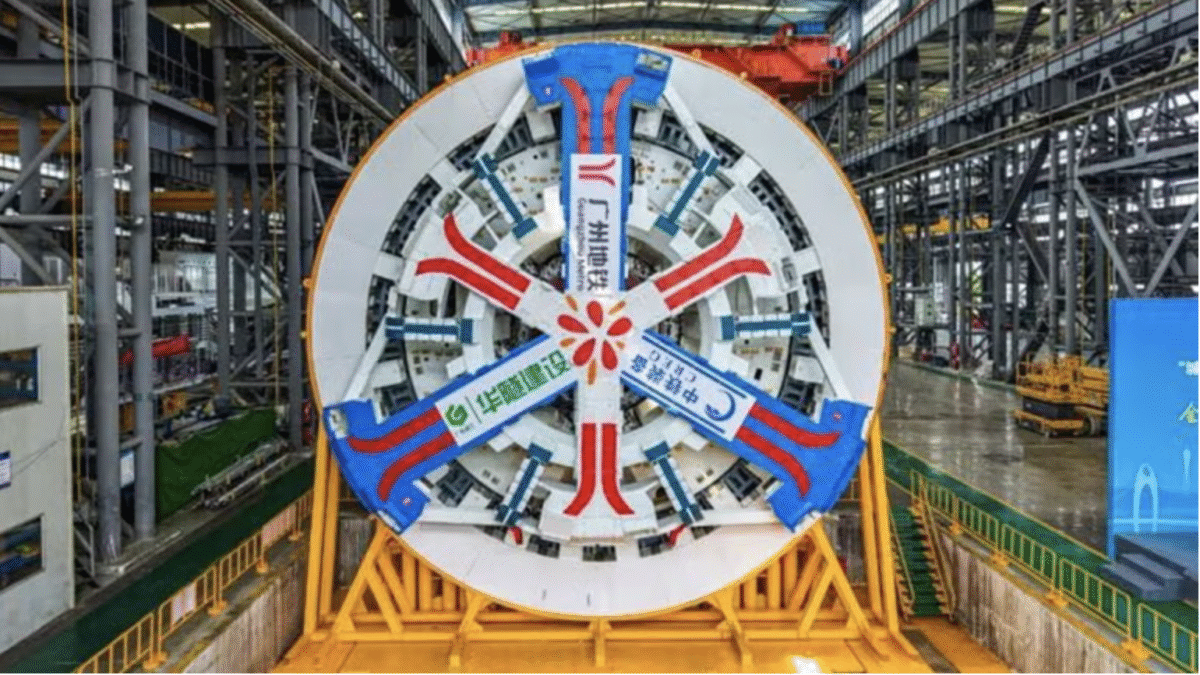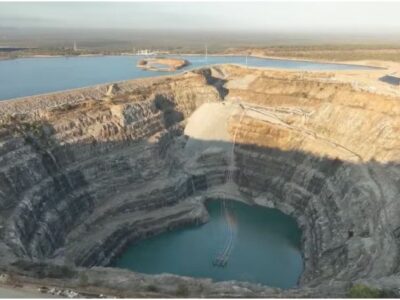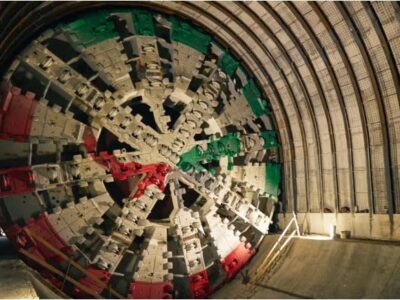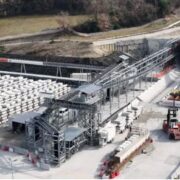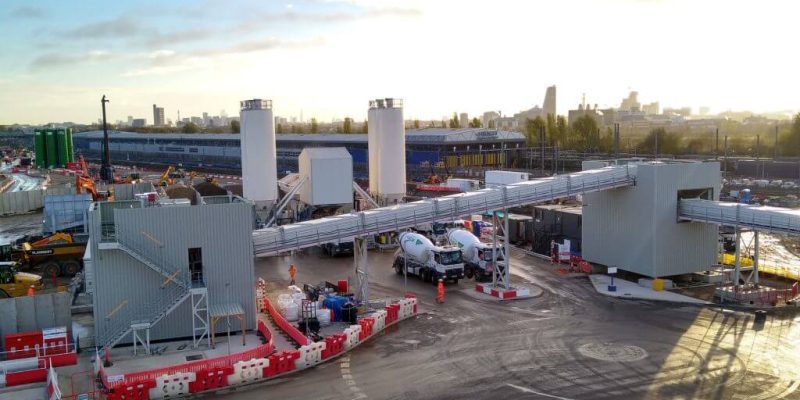
A 1.7-mile-long network of conveyors has started working in West London and will carry more than five million tons of spoil bored for the construction of HS2. The conveyor intends to terminate the need for one million lorry movements from roads in West London, relieving traffic congestion and emissions in the local area.
Balfour Beatty VINCI SYSTRA JV (BBVS JV) and Skanska Costain STRABAG JV (SCS JV), HS2’s contractors, have united to build the network of conveyors which meet at the HS2 Logistics Hub at Willesden Euro Terminal.
The conveyor network has three spurs, serving the Old Oak Common station site, the Victoria Road Crossover box site, and the Atlas Road site. At Old Oak Common, BBVS joint venture will operate the conveyor to clear the 1.5 million tons of spoil that is being bored for the station box, the subsurface structure in which the HS2 platforms will be built.
[embedyt] https://www.youtube.com/watch?v=2z0vAtvqjmc[/embedyt]
After officially switching on the conveyor, the Rail Minister, Huw Merriman expressed: “It was a pleasure to launch this truly remarkable conveyor system at Old Oak Common today and see how impressive it is in action, as it brings us one step closer to our goal of delivering a cleaner transport network.”
“These conveyors are just one way in which HS2 is transforming the future of construction, by keeping the impact on the environment and the local community to a minimum while driving growth across the country.”
Lee Holmes, HS2 Ltd.’s Stations Client Director, mentioned: “The launch of our conveyor system in West London is yet another important progress milestone for HS2 Ltd. This impressive network of conveyors means we are able to significantly reduce the impact of construction on the local area. Momentum on HS2 continues to build as the project nears peak construction, and systems like these conveyors are just one of the ways we are working to reduce carbon emissions in construction.”
SCS JV will use the spur which serves Victoria Road Crossover Box site. It will carry spoil excavated for the crossover box. In addition, the spoil dug in the Northolt Tunnel East construction, when two tunnel boring machines launched from the site in late 2023, will also be moved to the Logistics Hub through the conveyor.
The last spur runs from a site on Atlas Road and will be operated to terminate spoil from the excavation of a logistics tunnel which runs from Atlas Road to Old Oak Common. Then, the conveyor will be expanded via the logistics tunnel and will drag material from the excavation of the Euston tunnel, further diminishing the impact on the local road network.
From Old Oak Common, the conveyor will run at 2.1 meters per second, and the journey to the logistics hub will take 17.5 minutes. The conveyor system contains sound barriers and one cover to control noise and restrict dust dispersal.
The Project Director at Balfour Beatty VINCI SYSTRA, Nigel Russell, stated: “As we work to deliver Britain’s new, high-speed railway, we are continually seeking new ways to reduce the carbon emissions associated with our operations.
“The conveyor belt is a key example of how we are doing just that; collaborating with our partners to put in place new, innovative solutions which not only reduce our emissions, but also reduce disruption for the travelling public and local community.”
The Managing Director of Skanska Costain STRABAG JV, James Richardson, pointed out: “SCS JV are proud to be part of the collaboration that constructed the carbon-friendly HS2 conveyor network, responsible for removing over 5 million tons of spoil.
“Moving spoil on the vast 1.7mile conveyor network means a million fewer lorry journeys, less disruption to local residents and businesses, and puts us on track to deliver our commitment to achieving net zero carbon.”
The spoil will be taken by rail to three destinations across the UK from the Logistics hub. The destinations are Barrington in Cambridgeshire, Cliffe in Kent, and Rugby in Warwickshire – where it will be put to beneficial reuse, filling voids which will then be used as a basis for redevelopment, like house construction projects.
So far, the Logistics Hub has carried more than 430,000 tons of spoil, with around 300 trains spreading the spoil to its final destination.



